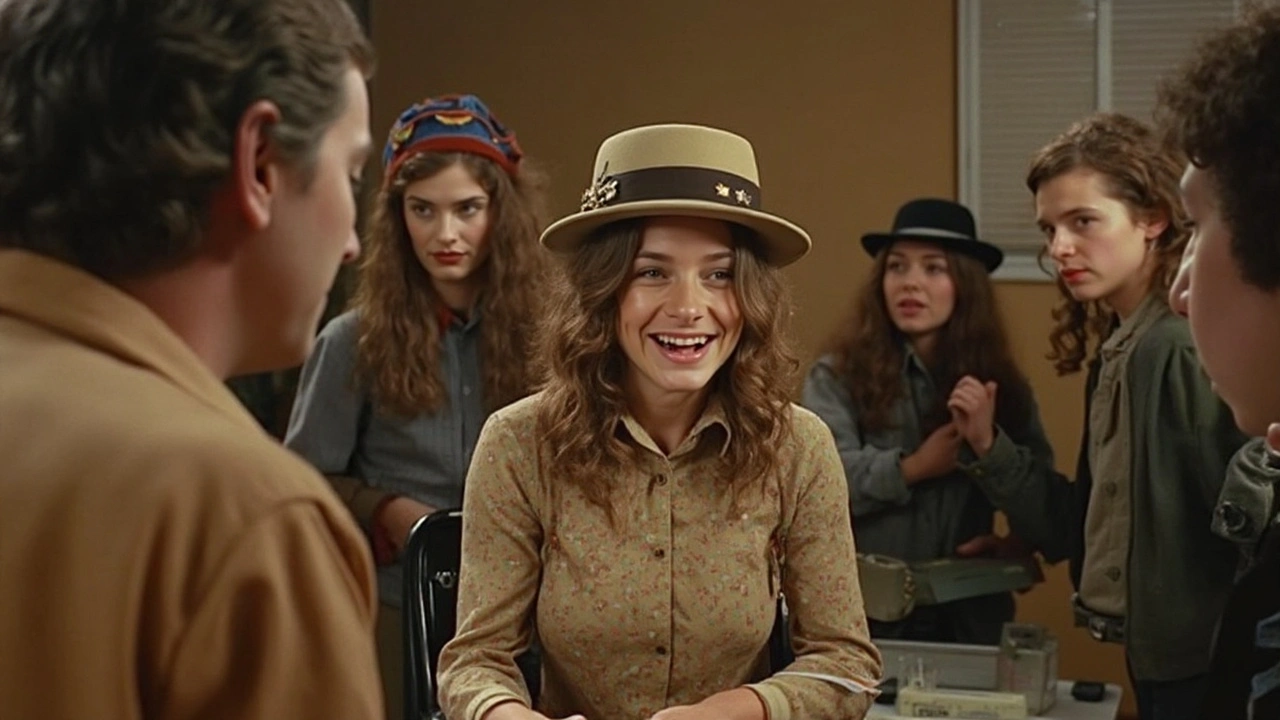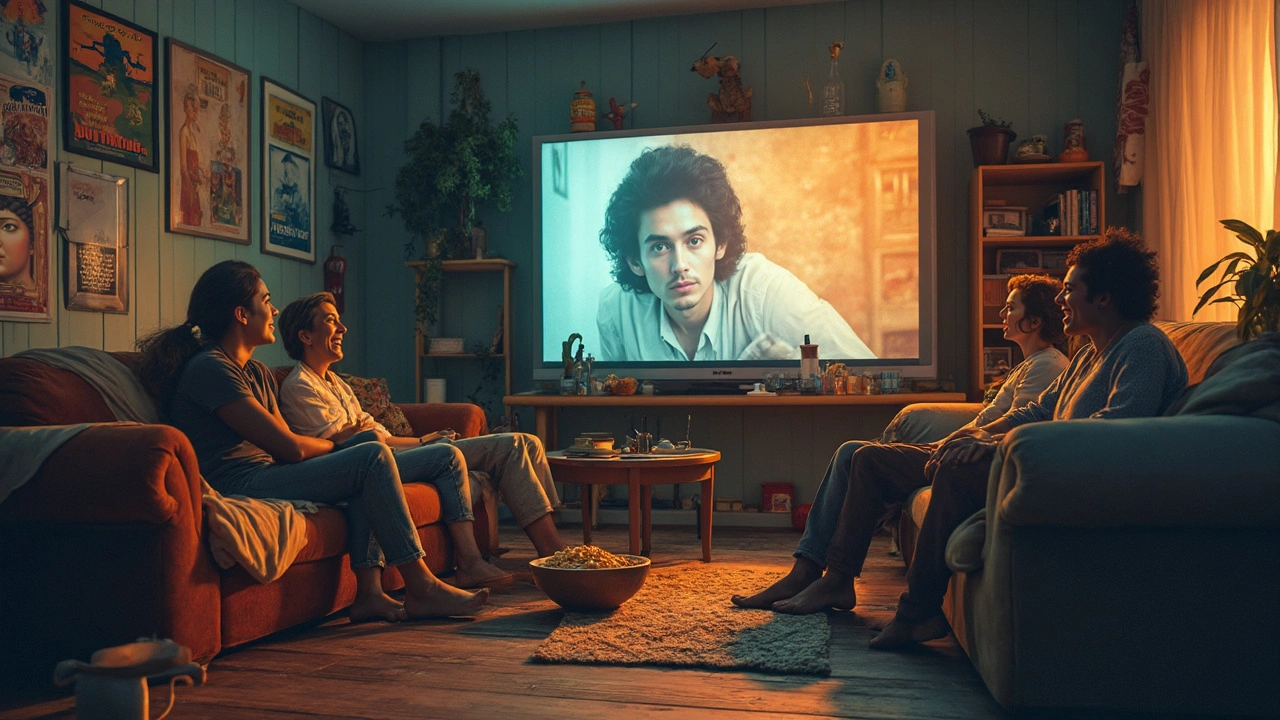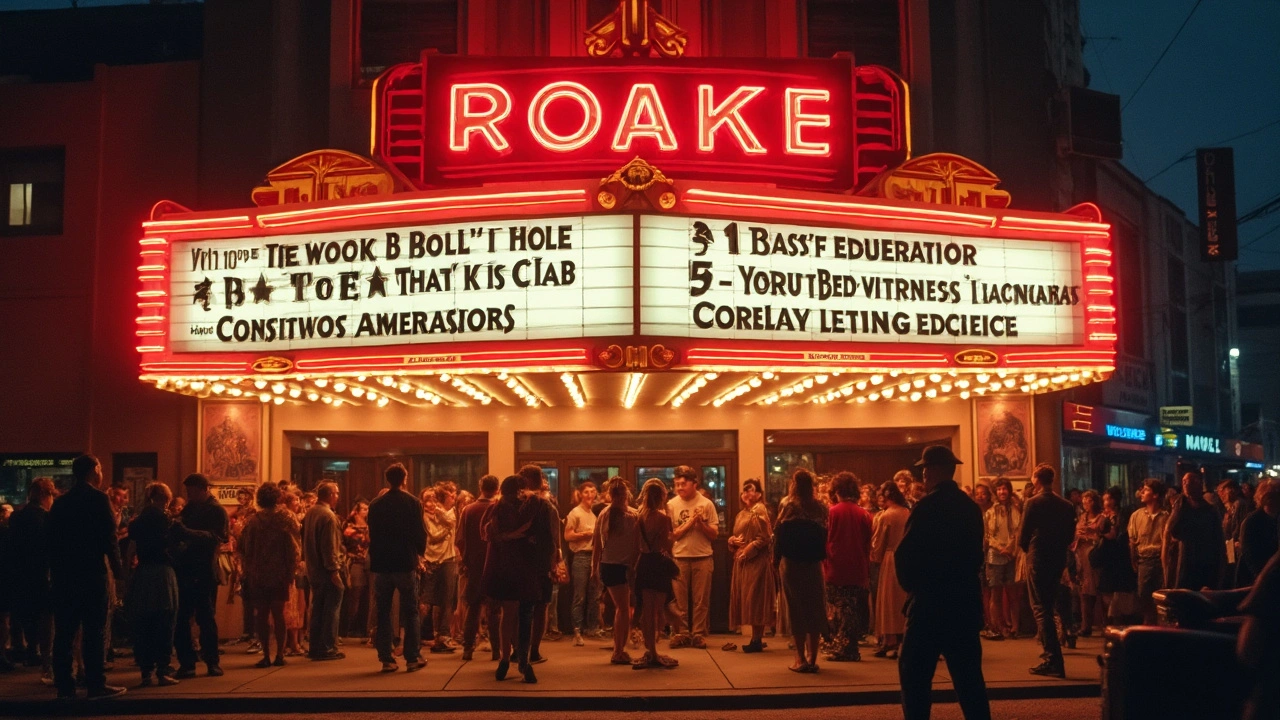Did you know some of the weirdest, most unforgettable films ever made were once considered “second-rate”? It’s funny how a movie with a shoestring budget and unknown actors could become the guilty pleasure of a late-night crowd—people who’d rather watch rubber aliens than Hollywood stars. B list movies aren’t just about cheesy effects and wild plots. They’re a snapshot of how people entertained themselves when big studios were busy elsewhere, usually chasing the next Oscar. B list films somehow stuck around, gaining cult followings and even inspiring future filmmakers. They broke all the rules, and that’s why people can’t stop talking about them even today.
Where B List Movies Came From: A Wild Ride Through History
Chances are, if you went to a cinema in 1940s Dublin (or Los Angeles, or London, really), you probably got a little more than you paid for. Movie theatres would show two films for the price of one—there was a main feature, called the “A” movie, with all the big stars, and then its shabbier little sibling, the “B” movie, usually shorter, a bit wilder, and often made for far less cash. This practice started back in the 1930s, when the Great Depression hit hard. Studios needed ways to fill those seats, so they started pumping out loads of quick-and-dirty productions—cheap horror, westerns, sci-fi, crime flicks, you name it. These were the B list movies.
B movies were never supposed to be the main attraction. The idea was simple: draw in audiences with a big name, then keep them there longer with a low-budget extra. Producers could crank these out in weeks, not months, and usually didn’t bother with pricey sets or big-name actors. Some movies even reused props from older films. It worked. Cinema owners loved the double bill, and studios saw a steady profit trickle in without much risk. People attended in droves, and directors learned to work miracles with what little they had.
The 1950s really turned up the heat. TV started stealing viewers from theatres, so B movies got stranger and more attention-grabbing to lure folks back to the cinema. You’ll find tales of atomic monsters, body snatchers, and worlds at war—stuff that would never make the main bill but still filled seats late into the night. Drive-in theaters popped up in rural places, and these films found a home there. Sometimes all it took to make a splash was a wild poster or a clever tagline—think about "Attack of the 50 Foot Woman" or "Plan 9 from Outer Space."
The funny bit is, some of today’s famous directors got their start making what were, at the time, pure B list schlock. Roger Corman, for instance, is now a legend in the industry not because he made high art, but because he made hundreds of expertly crafted low-budget films. Even future icons like Martin Scorsese and Francis Ford Coppola got their start pitching in on B productions. The definition of "B movie" changed after the 1960s as double features faded away, but the spirit of scrappy filmmaking lived on—in horror, action, and science fiction in particular. Very often, the only thing separating a cult classic from a "bad" movie was a bit of luck and a devoted fan base.

What Exactly Makes a Movie “B List”?
Let’s crack open that “B list” label. What’s really behind it? People argue about this stuff all the time. Back in the day, it simply meant a movie with a lower budget, fewer famous faces, less glitzy production. Nobody expected these films to sweep Oscars—most B list movies were pulpy, fast, and made to fill a slot. Horror, westerns, film noir, even martial arts flicks—they all lived here. If you saw a spaceship made out of tinfoil or a cowboy with suspiciously plastic horses, you were probably watching a B movie.
But a B list movie isn’t always bad. Sometimes these films became cult favorites, long after the big-budget stuff faded away. They had to rely on crazy ideas, inventive special effects, and, more often than not, pure accidental humor. For every film so-bad-it’s-good, like "The Room" or "Troll 2," there’s a "Mad Max" or "Evil Dead," which managed to break through and inspire a generation of moviemakers. The audience for these movies loved them for what they were—pure entertainment, rough edges and all.
There’s a bit of a sliding scale for what counts as “B list” nowadays. With streaming services cranking out more content than ever, budgets get stretched in all sorts of ways. You’ll find films today that technically check the B movie boxes—unknown actors, wild stories, lower production values—but might also star someone you recognize, or get picked up by a major platform. The classic idea sticks, though—a “B list movie” is one that just isn’t on the top shelf, but it’s still a party in its own right.
- Budget: Usually, under $2 million—sometimes way less (think “Paranormal Activity” filmed with $15,000 and a handheld camera!).
- Cast: Unfamiliar faces, or actors known for only these types of roles.
- Production: Fast and furious—often shot in weeks, not months.
- Genres: Horror, sci-fi, action, or just oddball comedies are where B movies shine.
- Cult Status: Some are forgotten, but others win over obsessed fans.
Here’s a little tip—looking for a true B list gem? Hunt for movies put out by indie studios, or ones that had tiny opening weekends but slowly built a reputation online. Modern B list movies live and die by their devoted cult audiences, who celebrate weird plot twists, over-the-top performances, and even obvious mistakes. They’re a reminder that anyone with a camera, an idea, and a bit of guts can still shake up the film world.

Why Do We Still Love B List Movies?
There’s nothing like the feeling of stumbling across a totally bizarre film at two in the morning—the sort you want to tell your mates about right away. B list movies have that magic because they ignore the rules. They don’t always try to please critics, and quite frankly, the folks making them sometimes look like they’re having a blast even if everything is going badly. This freedom leads to daring stories, shocking plot twists, and genuinely unpredictable moments. Ever watched "Sharknado"? It’s ridiculous, and that’s exactly why it became a pop culture phenomenon.
Fans love B movies because they give us something different. Not every film needs to be a masterpiece. Sometimes, you just want to see a rubber monster chasing screaming teens through fog, or a hero in a cheap costume fighting cardboard villains. These films are endearingly imperfect. They wear their flaws proudly, and that lets the audience sit back and have a laugh. Strange as it sounds, watching a B list movie can feel freeing—there’s no need to analyze the plot or judge the acting too harshly. You enjoy the wild ride for what it is.
B list movies didn’t just influence modern filmmaking; they taught studios and viewers to take chances. Streaming platforms now snap up films that would never have gotten a proper cinema release twenty years ago. Some directors purposely set out to recapture the ‘so-bad-it’s-good’ energy, knowing there’s always an audience for films that offer something left-of-centre. Quentin Tarantino, for example, famously loves B movies—he’s said his own “Kill Bill” films are love letters to the pulpy, genre-blending flicks he gorged on growing up.
Feeling inspired to try out a B list adventure? Pick a night, grab some popcorn, and find a film that sounds just odd enough to make you curious. Search online for “best cult classics” or “weirdest low-budget films.” Remember, these are the movies where surprises happen, where mistakes sometimes turn into brilliance, and where anyone can genuinely say, “I’ve never seen anything like that before.” The legend of the b list movie lives on, proving you don’t need millions to make movie magic—you just need an idea, and the guts to run with it.


I gotta say, B list movies have this raw charm that you just don’t get in big blockbusters. They really capture that gritty, unpolished side of filmmaking that’s often overshadowed by fancy CGI and huge budgets.
What’s interesting is how these movies still influence the industry even today, especially with indie filmmakers looking up to those old-school B movies for inspiration. It’s like a reminder that storytelling doesn’t always need a fat wallet.
But, let’s be real, some B movies are absolute trainwrecks and it’s almost aggressive how entertainingly bad they can be.
The article nails it by mentioning insider facts because knowing the backstory — like budget constraints and tight shooting schedules — gives you a whole new appreciation for what was accomplished.
Honestly, I’d dive way deeper into how these films shaped genre tropes before they got mainstream. Zombies, aliens, cheap thrillers... they all got their start in the B realm.
Also, anyone else think these movies belong in their own cult classics hall of fame? Because I do!
Omg yes! I totally agree with what you said about that gritty charm. B movies are like these hidden treasures, lol. From a cultural perspective, they reflect so much about the times they were made in — the quirks, the fashion, the fears.
Like, some of these low-budget flicks have a way of feeling more real than the polished ones, ya know? Sometimes the flaws make them more relatable in a way.
And you can see how different countries put their own spin on B movies too, which is super fascinating. It's a vibe that crosses borders and cultures.
Also, gotta admit, I love catching those cheesy moments with friends — it’s like a universal language of fun 😂
Thanks for bringing up the cult classics thing. I think these movies deserve more love internationally.
Hey, I appreciate both of your insights! B movies definitely have this nostalgic aura that keeps them alive in the hearts of many. It’s like they hold a mirror to the era’s creativity within constraints.
What I find encouraging about these films is how they open doors for new talent — actors and directors who later become big names got their breaks here.
And yeah, even the ones with obvious flaws have a kind of warmth, almost like they’re trying their best and you can’t help rooting for them.
It’d be cool to see more academic focus on their social and artistic impact. Sometimes they’re unfairly dismissed by mainstream critique.
I wonder if the growth of streaming platforms has revived interest in these gems?
Intriguing post! The semiotics behind the B list cinema phenomenon offer fertile ground for subcultural discourse. These films often adopt bricolage strategies, compensating for minimal capital through maximized diegetic creativity.
From a filmological perspective, the emission of genre conventions within budgetary constraints catalyzes a unique narrative form, a genre hybridity seldom afforded in A-list productions.
Moreover, their position on the marginal axis of the industry provides an emancipatory space for experimental aesthetics, enabling a form of cinematic dialectic between mainstream and underground modes.
One could argue that the spectatorial engagement with such texts involves a conscious suspension of normative cinematic expectations, ironically juxtaposing failure and success.
Would appreciate hearing your take on this dialectic and how it plays into cult fandoms emerging around B list creations.
Frankly, I find the popularity of B movies a fascinating cultural phenomenon worth dissecting thoughtfully. 🌟 Their charm lies not in high production values but in sincere storytelling efforts, often reflecting societal values and fears of their time.
The duality of their reception, adored for their imperfections yet scorned by critics, reflects a broader conversation about art versus commerce in cinema. 🎬
It’s also remarkable how audiences connect emotionally despite these films’ limitations, suggesting an innate human need to find value beyond surface appearances.
One could posit that these films serve as cultural artifacts, deserving of preservation and scholarly attention rather than being dismissed as mere entertainment.
As an avid emoji user, I throw in a few here to express my enthusiasm 😎: B movies are underrated gems that challenge our viewing prejudices and reveal creative resilience.
Okay but like, have y’all ever thought maybe B movies are part of some grand conspiracy? Like why do these low-budget flicks suddenly get cult followings? Some hidden agenda behind making sure we keep obsessing over cheesy sci-fi or horror? Sounds sus to me.
Also, I bet big studios use B movies to test out ideas covertly before risking their big $$ productions. It’s like a secret experiment on audiences.
Plus, there’s just something shady about how these movies sometimes predict future trends or social movements. How is that coincidence??
I really think we need to dig deeper, there’s more than meets the eye with B list cinema. Just a thought.
And don’t get me started on possible censorship or hidden messaging slipped into these flicks. They aren’t as innocent as they look.
Adding to the thoughtful points here, I love how B list movies embody the spirit of perseverance in the face of adversity. The filmmaking constraints actually nurture creativity rather than stifle it, pushing directors and writers to innovate within tight limits.
These films often act as a stepping stone for emerging artists, a training ground where raw talent sharpens their craft without the pressures of mainstream expectations.
It’s also worth noting the engaged communities forming around these movies, elevating them beyond just films to shared cultural experiences that foster inclusivity and belonging.
Their influence on genres like horror, sci-fi, and even comedy cannot be overstated — they lay the groundwork for many tropes and conventions now considered classic.
Overall, B list films highlight an important narrative in cinema history: that meaningful art doesn’t require exorbitant budgets, just passion and ingenuity.
Yo, this is an awesome convo so far! I gotta jump in and say that B movies are kind of like the indie rock of cinema — misunderstood but insanely influential. They stir up this raw energy that forces mainstream to take note.
Ever noticed how so many A-list directors talk about being inspired by these underdog flicks? It’s true! The boundaries for creativity are way broader there.
On a personal note, these kinds of films always gave me hope that dreaming big doesn’t mean you need big backing. Just passion and hustle.
And hey, spotting those behind-the-scenes hacks and creative workarounds is half the fun! Shows how the magic of cinema really happens.
Anyone else have favorite underrated B classics? I’ve got a list that’s probably too long to share here 🚀
Honestly, I never got the hype around these B movies. Most of them just look cheap and badly made to me 🤷♀️. Like, why celebrate them? They’re flawed for a reason.
Plus, I think the obsession with cult status over quality is kinda overrated. Just my take though, I prefer well-crafted films.
Also, most B movies don’t hold up well with modern standards — lame effects, bad acting. Could be why they’re niche.
Maybe I’m missing something but it feels like glorifying mediocrity sometimes.
Still, appreciate the post for explaining more about the genre. I guess it’s all about different tastes.
wtf ppl r rly debating b movies? lol anyway, i get the nostalgia but for me, a solid storyline beats budget anyday. 😒
like some B movies have mad lame plots but funny kills it tho sometimes i just watch to roast them heh
props 2 the ppl who make them tho, gotta hustle hard for sure
btw, anyone else think they deserve a section on streaming platforms more? would make exploring them easier vs digging through random sites
and yeah sharing faves would be lit, i’ll start: anything with campy horror is my jam 🙃